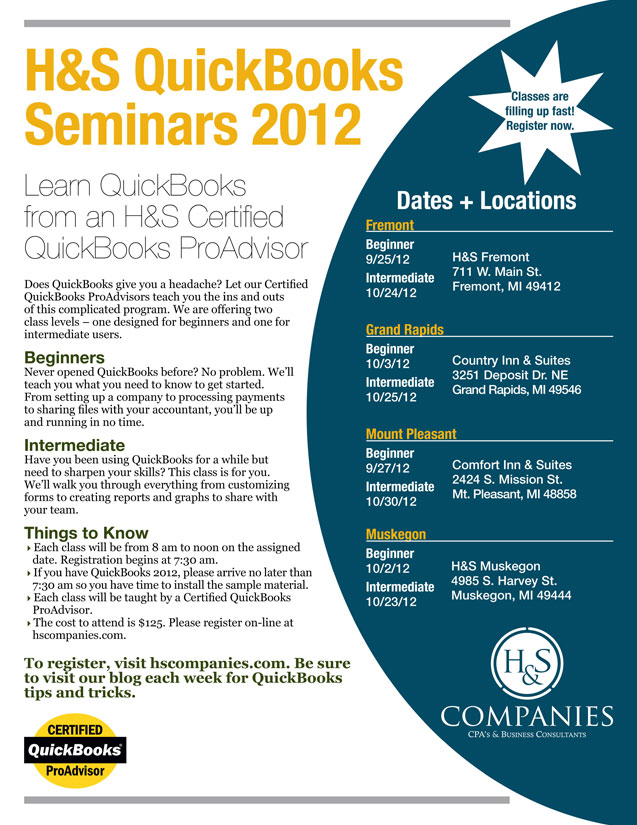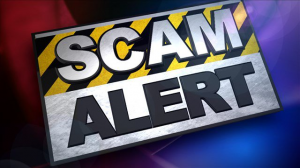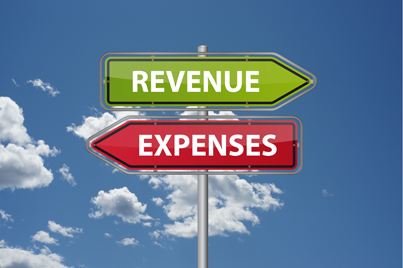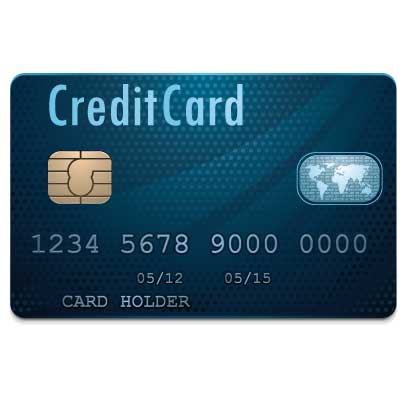
Does QuickBooks give you a headache? Let our Certified QuickBooks ProAdvisors teach you the ins and outs of this complicated program. We are offering two class levels – one designed for beginners and one for intermediate users.
Beginners
Never opened QuickBooks before? No problem. We’ll teach you what you need to know to get started. From setting up a company to processing payments to sharing files with your accountant, you’ll be up and running in no time.
Intermediate
Have you been using QuickBooks for a while but need to sharpen your skills? This class is for you. We’ll walk you through everything from customizing forms to creating reports and graphs to share with your team.
Things to Know
- Each class will be from 8 am to noon on the assigned date. Registration begins at 7:30 am.
- If you have QuickBooks 2012, please arrive no later than 7:30 am so you have time to install the sample material.
- Each class will be taught by a Certified QuickBooks ProAdvisor.
- The cost to attend is $125. Please register on-line at hscompanies.com.
Class Schedule + Locations
Fremont
Beginner — 9/25/12
Intermediate — 10/24/12
H&S Fremont
711 W. Main St.
Fremont, MI 49412
Grand Rapids
Beginner — 10/3/12
Intermediate — 10/25/12
Country Inn & Suites
3251 Deposit Dr. NE
Grand Rapids, MI 49546
Mount Pleasant
Beginner — 9/27/12
Intermediate — 10/30/12
Comfort Inn & Suites
2424 S. Mission St.
Mt. Pleasant, MI 48858
Muskegon
Beginner — 10/2/12
Intermediate — 10/23/12
H&S Muskegon
4985 S. Harvey St.
Muskegon, MI 49444


 Have you ever wanted to assign income or expense to an account, but you didn’t see one that fits? There are a couple of ways to set up new accounts. One way is to click on the “Chart of Accounts” icon from the home page. Another is to choose “New Account” in the drop down box of accounts while entering a transaction. Both ways bring you to the chart of accounts list. From there, right click and choose “New Account”. On the next screen select the type of account it will be and click “Continue”. Give the account a name. If you want this account to be a sub account of another, click the box and choose the account in the drop down. Sub accounts are common for things like utilities where you want the gas, electric, sewer bills reported separately, but all in one area. Once that is done, click “Save and Close” and your new account is ready to use!
Have you ever wanted to assign income or expense to an account, but you didn’t see one that fits? There are a couple of ways to set up new accounts. One way is to click on the “Chart of Accounts” icon from the home page. Another is to choose “New Account” in the drop down box of accounts while entering a transaction. Both ways bring you to the chart of accounts list. From there, right click and choose “New Account”. On the next screen select the type of account it will be and click “Continue”. Give the account a name. If you want this account to be a sub account of another, click the box and choose the account in the drop down. Sub accounts are common for things like utilities where you want the gas, electric, sewer bills reported separately, but all in one area. Once that is done, click “Save and Close” and your new account is ready to use!

 One of the most common mistakes we see in QuickBooks involves the setting up and paying of loans. Many QuickBooks users don’t set the loan up at all and just expense the total payment. Intuitively, this may make sense, but it is incorrect.
One of the most common mistakes we see in QuickBooks involves the setting up and paying of loans. Many QuickBooks users don’t set the loan up at all and just expense the total payment. Intuitively, this may make sense, but it is incorrect.
